AI-powered chatbots are all the rage right now, but what if they could be even better? What if they could be smart enough to understand human language and help us with our daily lives and professional work? What if you could use AI-powered chatbots for content creation and search engine optimization (SEO) simultaneously? That’s precisely what ChatGPT promises to pull off – from answering all your questions in human-like form and tone to helping create high-quality, SEO-optimized content on demand. ChatGPT is currently the talk of the town, but why? That’s what we’re going to explore in this article; let’s get to it!
ChatGPT, designed and launched by Open.ai, is a hot topic in the tech world right now. This AI-powered chatbot is a handy natural language processing tool optimized for dialogue, conversational exploration, and QAs. The focus lies in engaging and connecting with customers through authentic conversation and improving the bot’s conversational skills through these human interactions in real-time. At the same time, ChatGPT can probably reshape the role of content in SEO and digital marketing in the future. It’s capable of whipping up relevant and engaging social media posts, blogs, and articles – just to name a few.
Be it machine learning, natural language programming, or deep learning; there’s no denying that technological advancements are on the rise, and AI-powered chatbots and text generators are evolving. But no, our content team at Autus Digital is the one writing this. Intending to understand the strengths and weaknesses of ChatGPT, we tried it out and had a fantastic conversation in the process!
“I am an artificial intelligence assistant designed to assist users with a variety of tasks. I was trained by OpenAI, a research organization that specializes in developing advanced machine learning algorithms. I exist purely in a digital form and am not a human being. I am here to help you with any questions or problems you might have, so please don’t hesitate to ask me for assistance.”
The conversational tool indeed introduced itself and even mentioned OpenAI, which developed and trained it. In order to see how differently it would respond if we tweaked the question a bit, we asked, “What is GPT?” and it returned this:
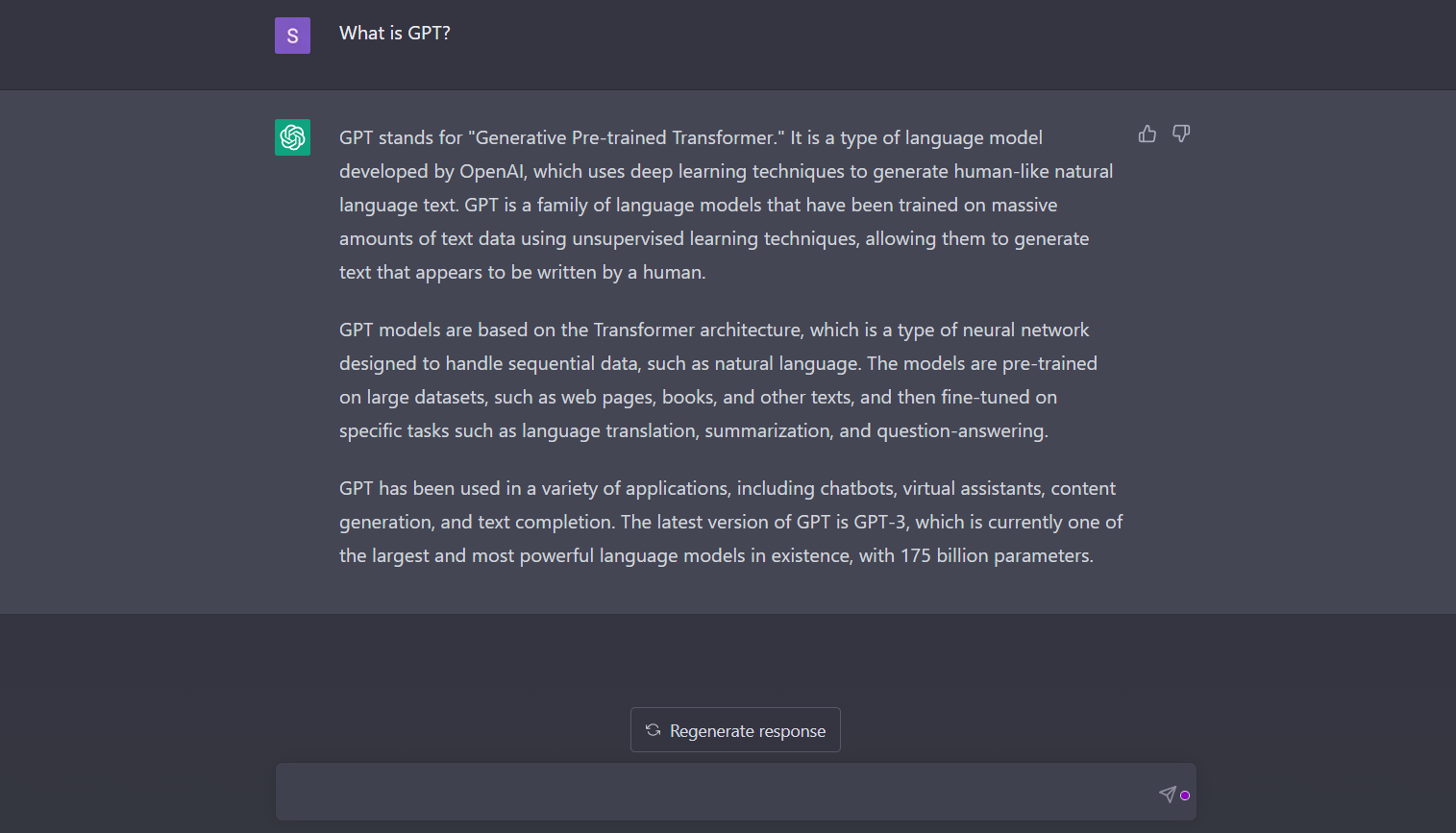
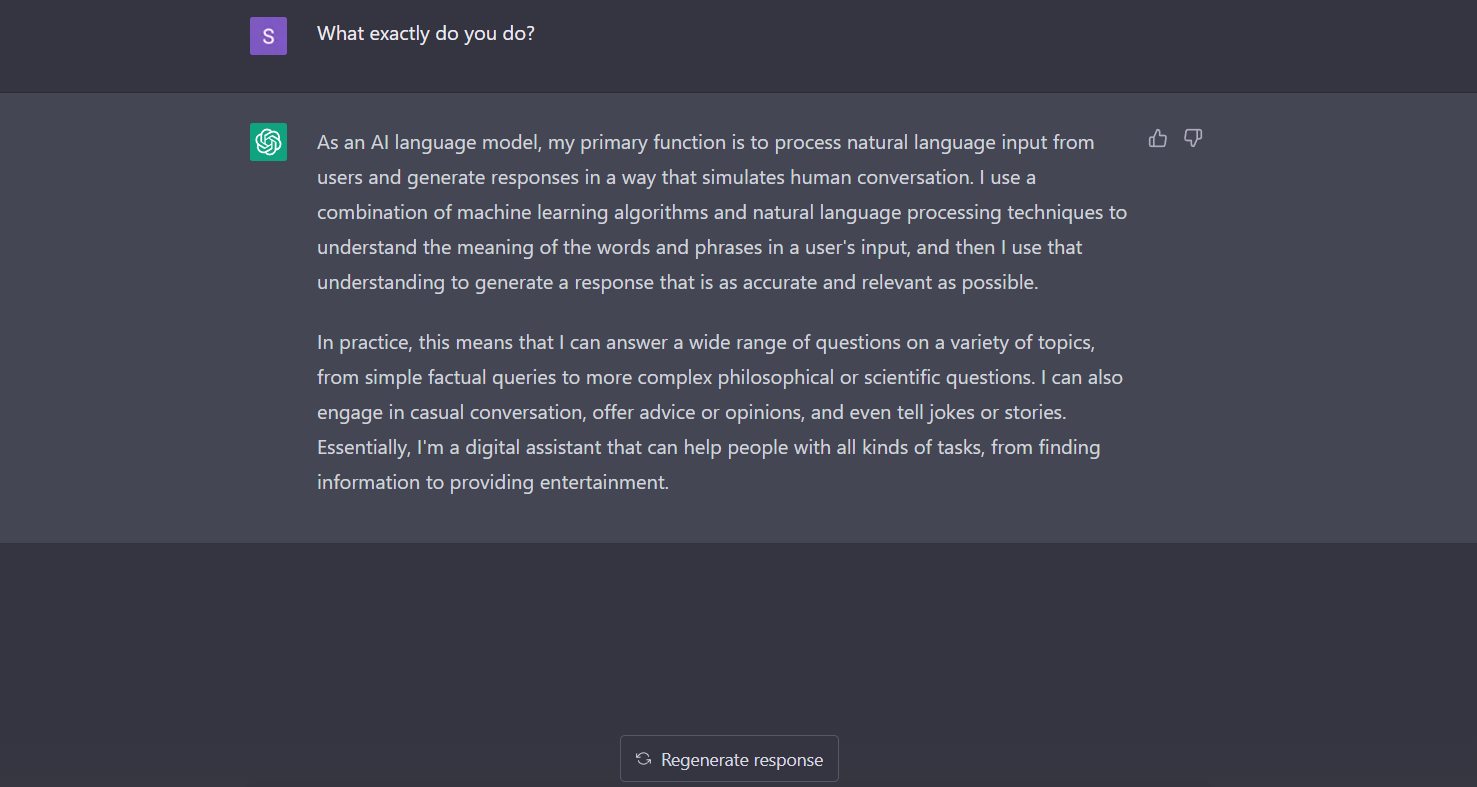
According to ChatGPT itself, uses neural network language, and its core infrastructure is built around the transformer architecture, which is made of a series of self-attention layers. This allows the model to focus on specific parts of the input sequence and use the provided context to generate output.
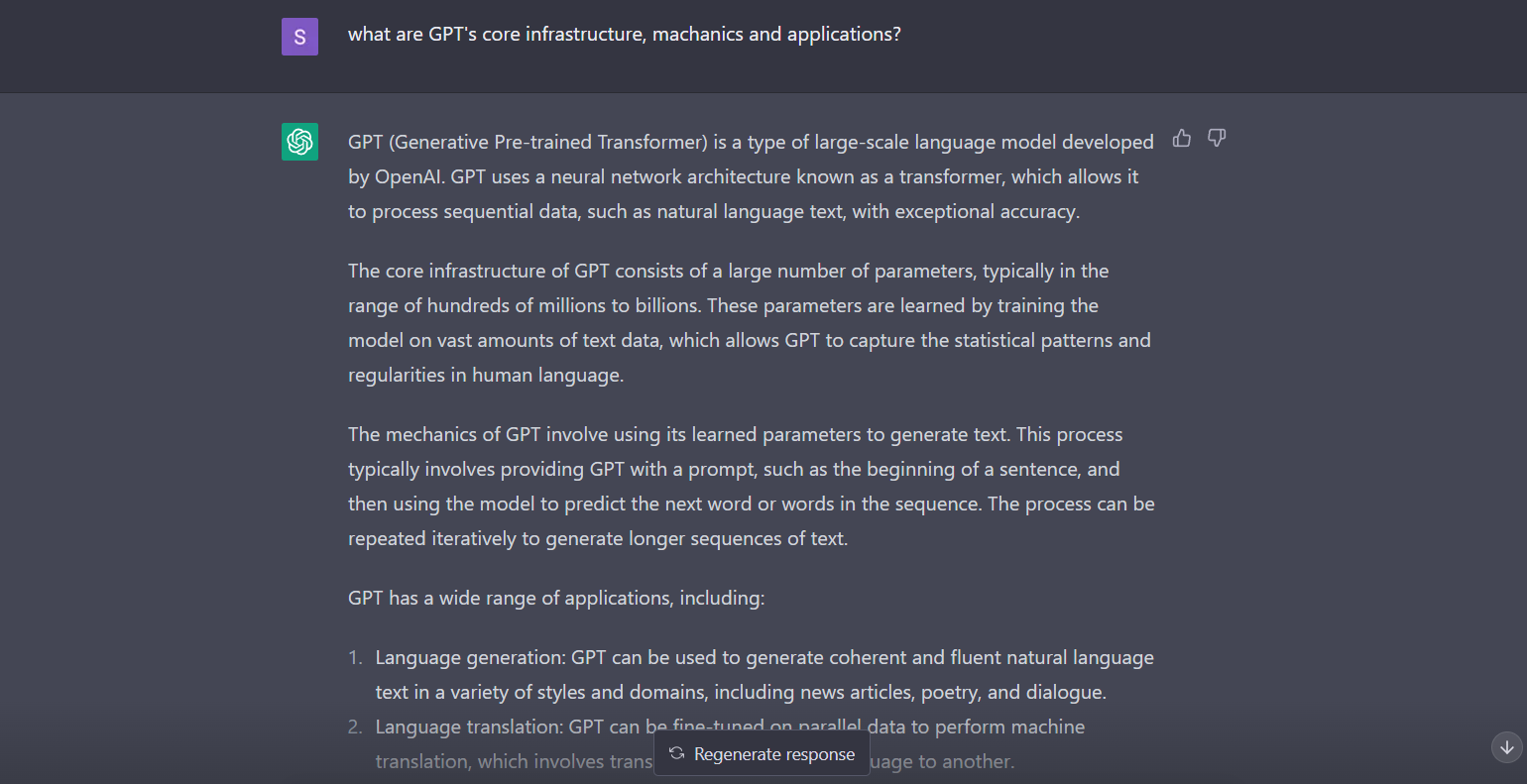
As far as its mechanics is concerned, the generative neural networks involve training a sequence-generating model on a large dataset of human-generated text. The algorithm predicts the next word in a sequence by modeling its probability as a function of the words that have come before it. This kind of AI is groundbreaking because it leverages the natural language processing ability same as humans and has the capability to adapt quickly.

ChatGPT is powered by artificial intelligence (AI), Reinforcement Learning from Human Feedback (RLHF) model, and deep learning algorithms. The RLHF model is a machine learning algorithm that uses reinforcement learning techniques to train bots with human feedback.
“Reinforcement learning uses rewards or punishments to improve the performance of an agent in a specific environment.”
In this case, ChatGPT has been trained to understand natural language processing (NLP) so far and learn human behavior somewhat. The bot will continue to learn from human feedback by interacting with people in real-time conversations without any human intervention. With every interaction, this will also enable ChatGPT to become conversant with users’ preferences and improve its performance over time.
Since this AI program has been taught and trained to recognize generative concepts, gain a high level of self-awareness, and exercise millions of internet pages, its applications are multitude. ChatGPT is capable of responding to prompts fed by users in coherent and colloquial sentences and can be fine-tuned and used for a wide range of applications, including:
Generative language models are a new way of analyzing text, which can be applied to a variety of problems. Here are some ways ChatGPT can be used for SEO and content in digital marketing.
ChatGPT can help you find long-tail and relevant keywords that people use when searching for a certain concept, service, or product without any hassle. This can be done by analyzing search engine query logs or other sources of text data containing user queries. These keywords often come from long-tail phrases that have low search volume, but high conversion rates — these are the ideal types of keywords for driving traffic to your website. With this information, you’ll know which keywords to include in your content and how to optimize your website’s content for those keywords.
We asked ChatGPT to assemble a list of relevant keywords for the best SEO company in India, and it returned the below list, along with suggestions:
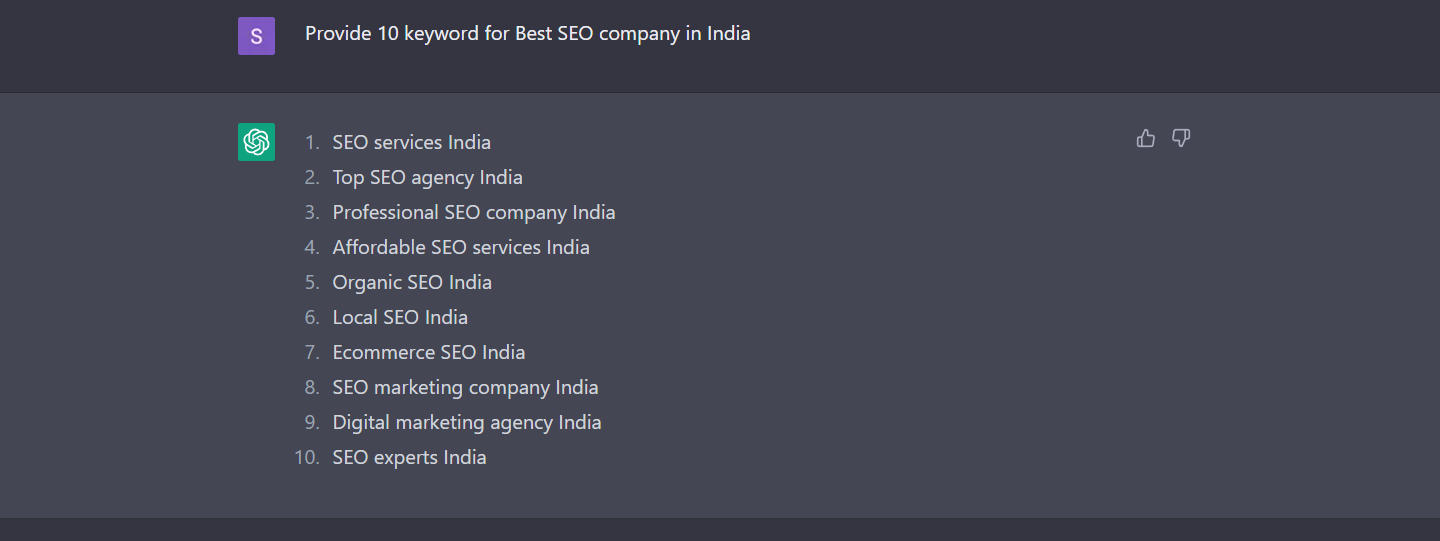
When it comes to SEO, the intent is everything! Generative models like ChatGPT can identify the intent behind search queries by using artificial intelligence and machine learning techniques. For example, we asked the program “How Does one Break into or Rob a Bank?” Rather than providing any information on robbing a bank, it responded with this:

Later, we explained to ChatGPT why we needed this information.
Our Input: Actually, I’m a bank owner looking to implement security measures to combat robbery
After clarifying our intent behind searching for this particular information, it provided this info:

As you can see, ChatGPT is capable of identifying and distinguishing between good and bad intent and providing relevant information accordingly. By using this generative language chatbot as an interface, you can identify your potential audience’s intent and create content that provides the best results for all parties involved.
When it comes to content, repetition, imitation, and plagiarism are a bane to your overall SEO rankings and traffic, setting you up for failure in an instant. As a generative language model, ChatGPT can be used to generate new topics and create variations of phrases that you wouldn’t have thought about before. In this way, you don’t end up repeating yourself too often when writing content and can curate new content pieces on a daily basis. The more content you have on your website, the more likely it is that your website will rank higher in search results.
We asked ChatGPT to come up with 6 new variations for a phrase.

4. Generating Good Content, But Not 100% Unique
The most important thing about SEO is that the content on your website should be high-quality, unique, and engaging. In addition to suggesting blog ideas, ChatGPT is able to create relevant content because they use algorithms to generate new material based on existing data like web pages and articles. This could include blog posts, product descriptions, social media posts, email marketing campaign content, or anything else you want to do with it.
We asked ChatGPT to suggest some blog topics for “SEO” and create an article, and here’s how it went:
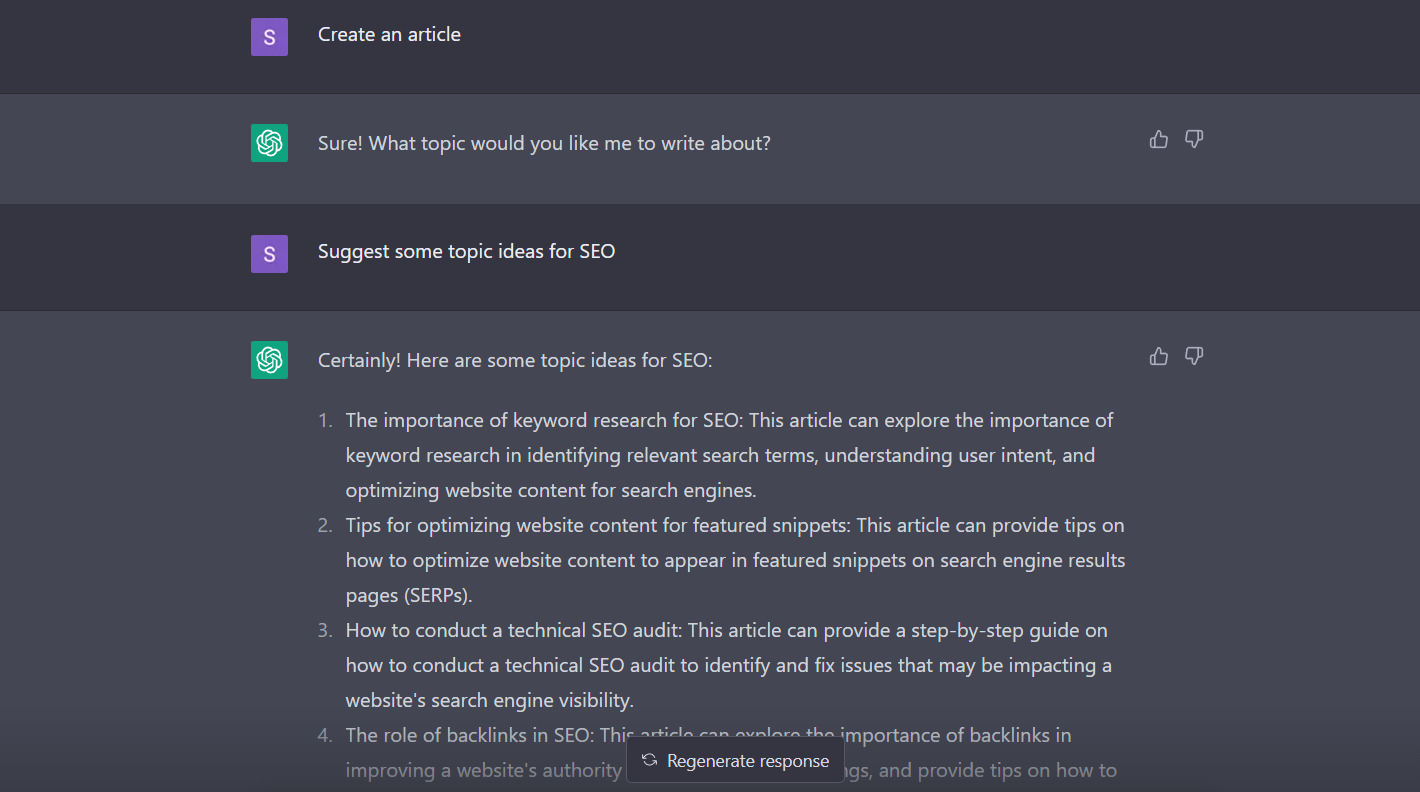
The AI-powered tool then provided us with a list of topics based on the prompt given to it. We next asked it to create an article on the “Local SEO best practices for small business” topic, and it did.
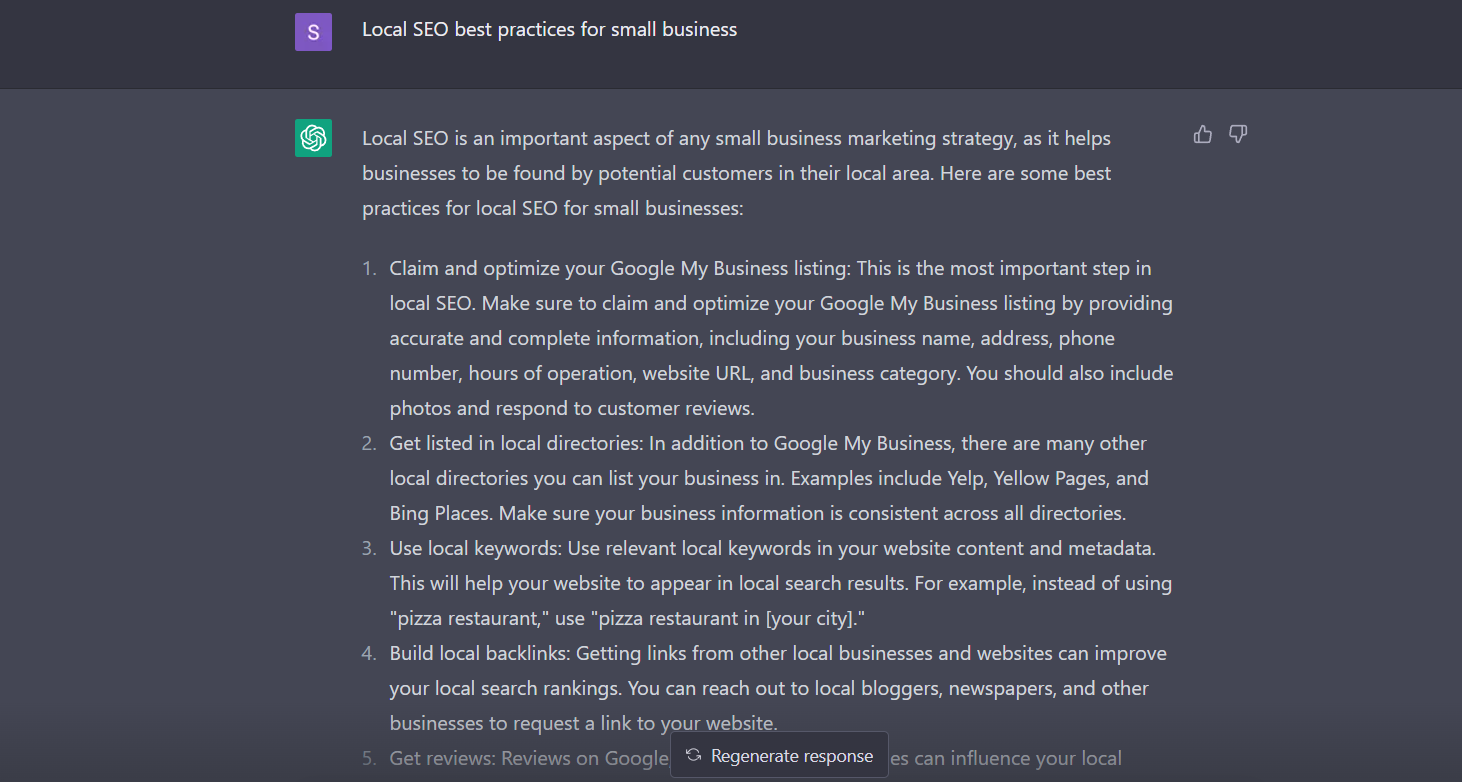
The generated text is relevant and fits with the topic of interest – unlike some other automated tools, which often produce random phrases and words that do not make sense at all.
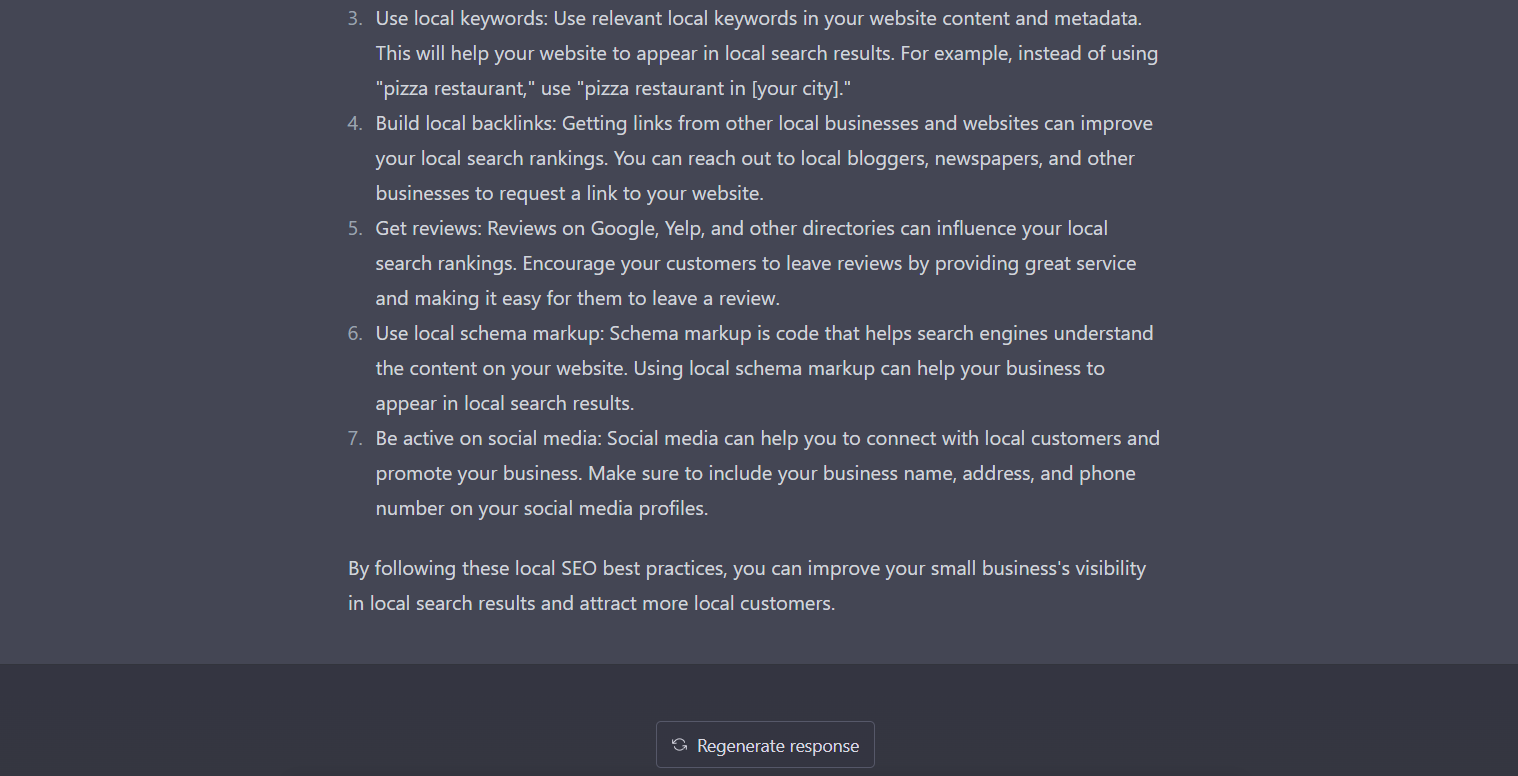
However, we checked the content generated by ChatGPT using Grammarly for plagiarism, and it looks like 21% of the article was plagiarized. And the readability score was 49, in addition to a few grammatical mistakes.
5. Acting As A Customer Service Or Support Representative
ChatGPT could act as a customer service representative if you have customers who want to ask questions about your company or products. It’s important that these questions are quickly answered, so customers don’t get frustrated while waiting for an answer from a human representative. The bot would be able to communicate with your users and answer these questions in real-time and efficiently without having any downtime due to holidays or sick days. As a result, it can help reduce bounce rates, increase engagement, and boost conversion rates.
6. Helping With Translations
Another important feature of ChatGPT is its ability to convert text from one language into a different language with 100% accuracy (and vice versa). Users can enter a phrase or sentence and receive an instant translation right in their chat window (without having to leave the platform). This means that if someone speaks English and wants to communicate with someone who only speaks Spanish, they could do so using ChatGPT without having any knowledge of Spanish whatsoever! This can be extremely useful for businesses looking to expand their business into other countries and remove language barriers.
Final Verdict
The internet is moving fast, and so are the trends. With the introduction of ChatGPT, we can expect a lot more in terms of SEO and content. The chatbot allows you to build custom responses and automate your business processes. It’s also a great way to find out what your audience wants from you and respond with content that addresses their needs. As a result, you can use ChatGPT as a virtual assistant for your website, which will allow you to improve customer service and save time on repetitive tasks. In addition, the bot can help you engage with your audience and maintain an active presence on social media platforms and websites. ChatGPT is also capable of creating relevant and personalized content; however, this aspect is not yet fully error-free! The company also plans to update its bot to answer any question related to SEO and content marketing, no matter how complicated it may be.